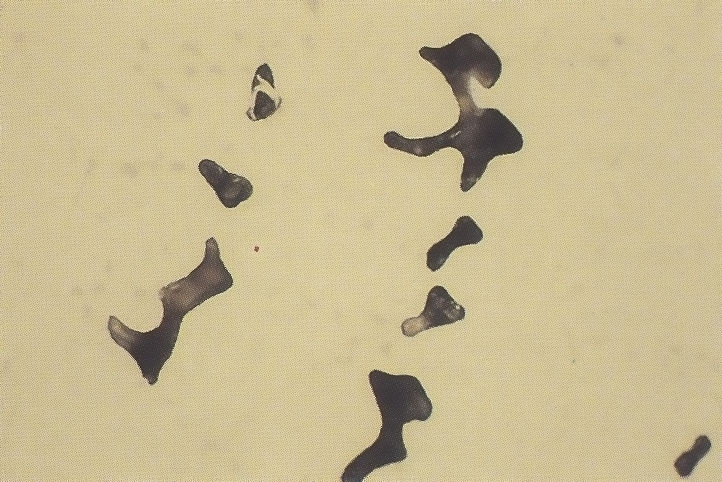
Alphabetical Index
Browse by Elements
Keyword Search
ASTM Electrolytes
Macro Etchants
Micro Etchants
Named Etchants
New Etchants
Al and Al Alloys
Cu and Cu Alloys
Fe and Fe Alloys
Ni and Ni Alloys
Carbide Etchants
Fluoride Etchants
Nitride Etchants
Other Etchants
Oxide Etchants
Phosphide Etchants
Single Crystal Etchants
Thin Film Etchants
Wafer Etchants
Help
Home
False Porosity

Example: Superalloy after 5 min polishing, Mag. 500x.
Some materials have natural porosity, e.g.cast metals, spray coatings
or ceramic. It is important to get the correct values, and not wrong
readings because of preparation faults. Depending on the properties of
a material, two contrary effects regarding porosity can be seen. Soft
and ductile materials can be deformed easily. Therefore pores can be
covered by smeared material. Hard, brittle materials often get fractured
at the surface during the first mechanical preparation steps. Contrary
to the ductile material, where the initial porosity seems to be low
and the pores have to be opened, brittle materials seem to have a high
porosity. The apparent fracturing of the surface has to be removed.
Reference: Metalog Guide, page 82-85,
Struers A/S, 2610 Rodovre, Dennmark. Note: Image and text by courtesy of Struers A/S company.